Causes of yellow spots on cucumber leaves and how to treat them
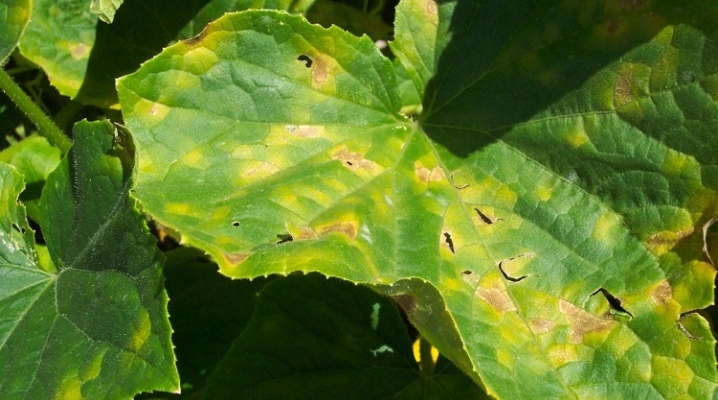
Many summer residents grow cucumbers on the plots. This is a very popular culture, which, unfortunately, is prone to serious diseases. Some of the ailments appear primarily on cucumber leaves. From the material of this article, we learn what the reasons for the formation of yellow spots on the leaf plates may be.
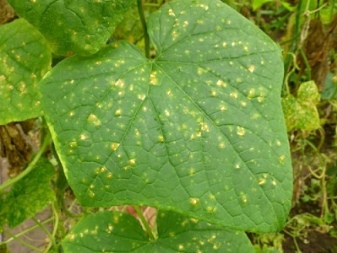
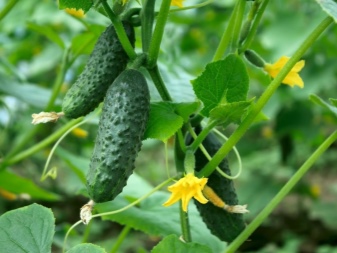
Agrotechnical and weather causes of stains and their elimination
Summer residents very often notice that various signs of certain diseases appear on the cucumber plantings they planted. In most cases, the health of a crop can be judged by the condition of the leaf blades. Growing cucumbers, you can see that characteristic spots of yellow color have appeared on their foliage. This indicates that the vegetables require adequate and effective treatment. Let's consider what can lead to the formation of yellow spots, and also figure out how to fix the problem that has arisen.
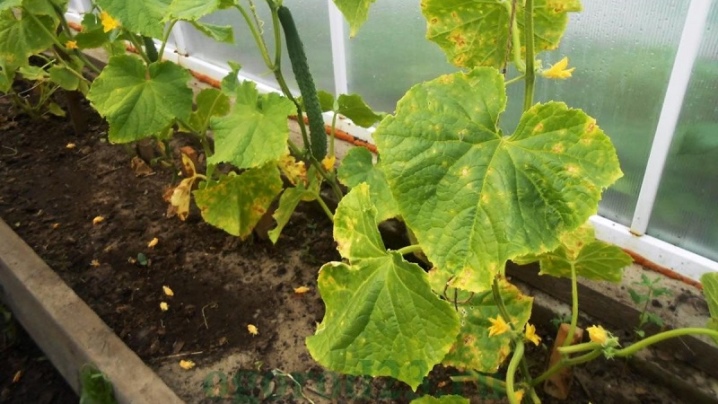
Lack of nutrients
In many cases, a lack of essential nutrients for plant health is the cause of the appearance of yellowish or yellow-brown spots on the leaves. We are talking about a large number of macro- and microelements. The most common cause of yellow spots is chlorosis. It makes itself felt if there is a violation of the metabolism of nutrients in the plant, as well as a failure in the production of chlorophyll. The main source of this disease is a lack of certain micro- and macroelements in the soil layer.
In order to understand exactly what exactly is missing from the plant planted on the site, it is advisable to consider the location and nature of the yellow spots on the foliage.
- Yellowness can be seen on the foliage between the veins. This suggests that the culture needs a sufficient amount of copper and iron. This type of disease in most cases affects cucumber plantings, starting with the upper leaves on the shoots. As a rule, plants that have been planted in lime-type soil get sick.
- If lesions are present on the lower leaf plates (especially at the edges), then this indicates a lack of potassium and magnesium. Most often this happens in beds that are based on sandy areas.
- If the cucumbers lack manganese or sulfur, then at first the young leaves turn yellow in the area of the veins, and after that the entire leaf blade changes its color.
- Crops planted in acidic or alkaline soils usually suffer from nitrogen deficiency.
The very nature of yellowing in this case is manifested by the defeat of the lower leaves near the central part. Gradually, the "diseased" leaves simply dry out.
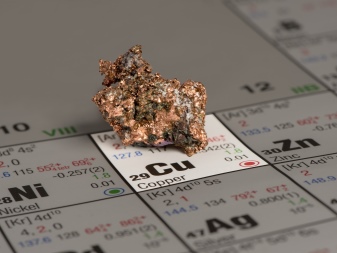

Weather
The characteristic yellow spots on cucumber leaves often develop under the influence of certain weather conditions. For example, such problems are often caused by sunburn. The result is very dry specks that look like they've burnt out. Such damage can be detected by routine visual inspection.
Usually, the problem of the formation of such burn spots arises when it comes to cucumber seedlings planted near an open window. Often mature plantings in open ground conditions also suffer from burns.The latter can be strongly influenced by direct sunlight. In this case, improperly perfect watering often leads to problems, in which a significant amount of moisture settles on the sheet plates, attracting excess heat to itself, and also causing burns.
It is necessary to take into account the fact that a lack of light can also cause quite serious harm to cucumber plantings. Plants must necessarily "take sun baths" for half a day, which does not cause any difficulties against the background of the summer season.
Extra problems often make themselves felt if the plants are grown in a greenhouse. Here the sun is less accessible to culture.
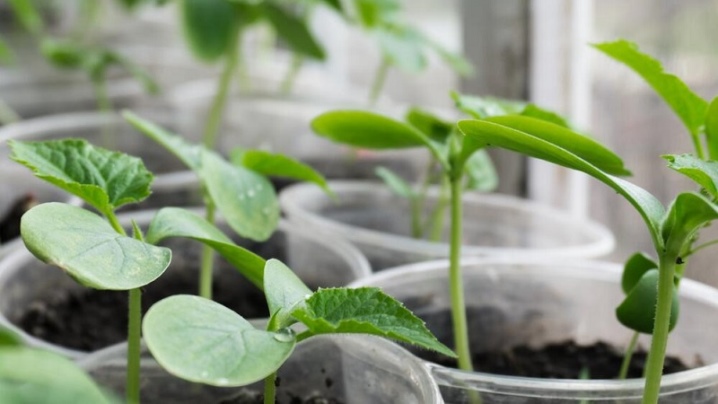
Low temperature values and temperature fluctuations can lead to yellow spots. If the values are too high, then the leaves become thinner, losing their natural green color. The best temperature ranges from +18 to +30 degrees Celsius. If during the day the fluctuations turn out to be more serious, then changes in color may well take place.
Excessive drought can also harm the health of cucumber plantings and leaf plates. It is often caused by insufficient watering on hot days. Then the plants begin to dry out, speaking of their condition through yellowish spots. It is very important to stop the drying process in a timely manner, otherwise it will not be possible to achieve a rich harvest.
Air humidity also plays a role. This indicator depends on how often crops are irrigated, on weather conditions and temperature values. In a greenhouse, this indicator turns out to be much higher than in open ground conditions. This is due to the fact that moisture evaporation is much slower. Its delay occurs on the walls of the greenhouse.
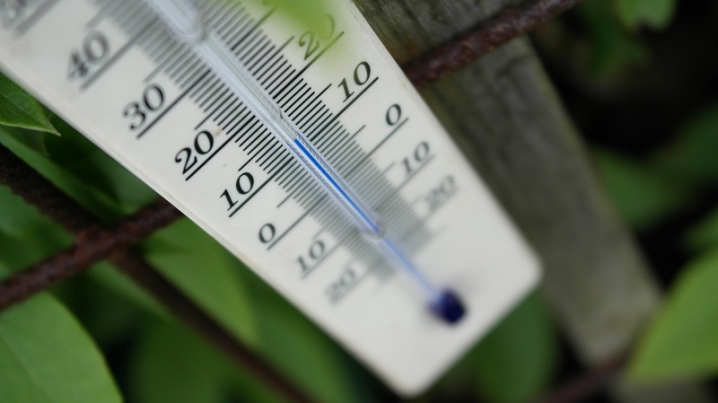
Improper watering
It has already been said above that improperly implemented watering can cause very serious harm to both mature plants and young shoots or seedlings. If there is too much moisture, then the air necessary for planting will be displaced from the soil. Such nuances provoke a violation of the oxidation process of organic elements, as well as inhibition of the absorption of beneficial nutrients.
Cucumbers love exceptionally moderate and regular watering. In no case should the soil be overmoistened, as well as overdried. It is highly recommended to pour a couple of buckets of clean water for every square meter of soil.
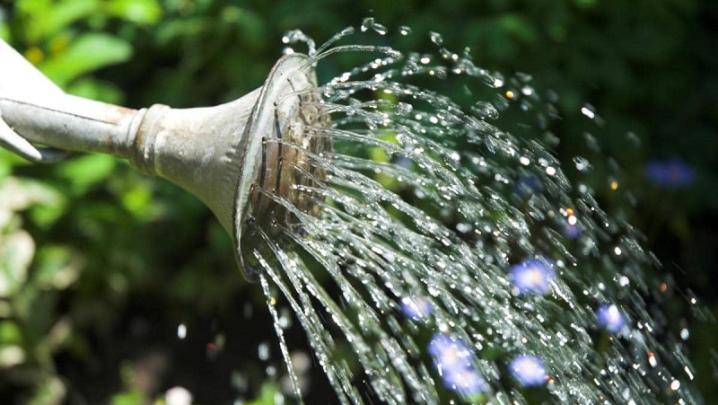
How to deal with disease?
The formation of yellow spots on the leaf plates can lead to many of the common diseases to which the considered dacha culture is susceptible. Cucumber plantings very often suffer from powdery mildew, fusarium and other serious ailments. Let's learn about the main features of some of them.
Powdery mildew
Quite a serious disease that can cause great damage to plants. Often yellow spots on cucumber leaves appear precisely because of the destructive effect of powdery mildew. The main causative agents of this dangerous ailment are disputes. They have the ability to survive the winter on plant debris.
If small yellow specks are visible on the leaves, which grow in size over time and cover the entire surface of the plate, then this speaks precisely of the disease in question. Pigmentation certainly begins to grow, moving from the lower half to the tops. After a while, the seedling simply dies. Powdery mildew can also be seen when a lilac or grayish bloom appears on the leaves. At the first stages, the formed spots have a light green tint, but then they turn yellow, become darker and clearly visible.
As soon as the first signs of this dangerous ailment were noticed, the affected areas of the cucumbers must be treated with a solution of Bordeaux liquid. Instead, Vitoplan or Gamair preparations are suitable.
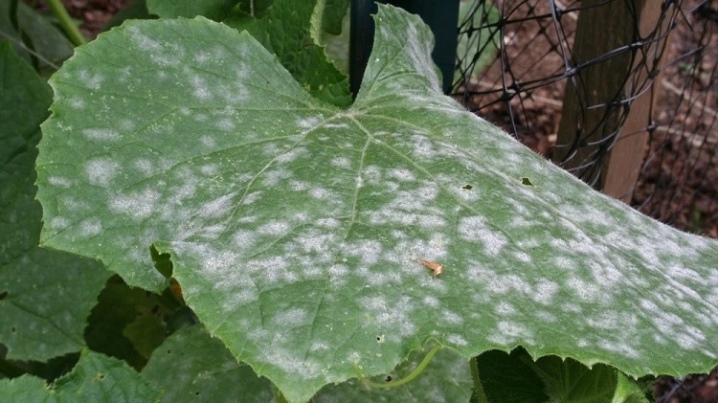
Fusarium
Another extremely dangerous disease of a fungal nature. Fusarium most often attacks cucumber plantings that are grown in a greenhouse or greenhouse. The symptomatology of this disease is rarely ignored by summer residents, since it manifests itself quite clearly. First, the leafy plates of vegetables turn yellow, and then their upper parts fade. In the future, the root acquires a brown color, the stem begins to rot.
The ailment in question is especially dangerous because it spreads literally rapidly. Cucumber bushes can die within just a few weeks if the summer resident does not take the necessary action in a timely manner.
In the fight against this disease, such popular drugs show high efficiency:
- Fitosporin-M;
- "Baktofit";
- "Vitaros";
- "Maxim" and others.

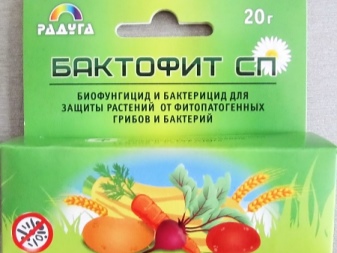
Mosaic
This disease is special. It can occur even if the plant has received previously necessary and regular care. First of all, those cucumbers that grow in greenhouse conditions are exposed to mosaic disease.
Mosaic is most often accompanied by the following symptoms:
- yellowing of marble-type sheet plates;
- with a disease, the leaves curl;
- they become smaller;
- after some time, the ovaries fall off.
The considered viral disease does not lend itself to any of the methods of treatment. It can only be prevented by resorting to certain preventive manipulations.
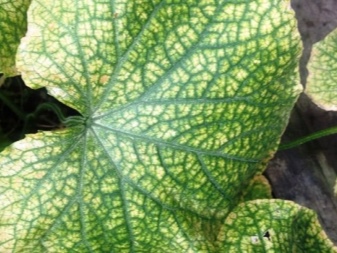
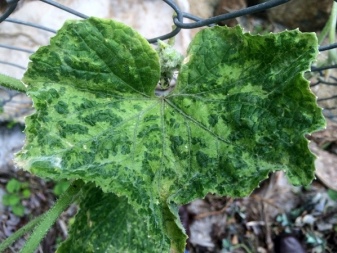
Peronosporosis
A common disease that also often provokes yellow spot. With this ailment, yellowish specks appear on the upper parts of the leaf plates. In addition, a characteristic greenish bloom forms on them. The main feature of downy mildew is the ability not only to spread over the entire surface of cucumber plantings, but also to infect all crops that are planted in the immediate vicinity.
Another name for downy mildew is downy mildew. This disease also needs to be treated in a timely manner, without wasting time. With this ailment, not only the leaves suffer from the formation of noticeable spots, but also the stems of the plants crack, the necessary tone of the shoots is lost, the buds fall off, the fruits cease to form.
To combat downy mildew, it is advisable to treat diseased leaf blades with special chemicals. Products such as Abiga Peak or Consento are ideal. For effective prevention, the crop is sprayed with biological insecticides during the growing season. We are talking about the compositions "Baxis", "Fitosporin-M" or "Trichoderma".

Anthracnose
If the plant has been damaged by this serious disease, then areas of a characteristic yellow-brown hue appear on its leaf plates. They are complemented by a pinkish bloom that spreads over the rest of the crop surfaces. Visible mucus forms on the cucumbers. It is she who leads to the appearance of small ulcers. As a result, the plant dies.
Despite the fact that the disease in question can lead to the death of a culture, it can be dealt with quite simply. To do this, it is enough to process cucumbers once a week with an effective Bordeaux liquid, as well as a weak solution based on copper sulfate. Some summer residents then turn to sprinkling cucumber bushes with lime or charcoal.
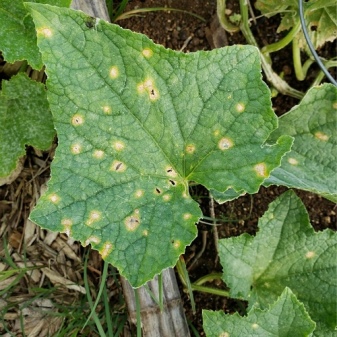
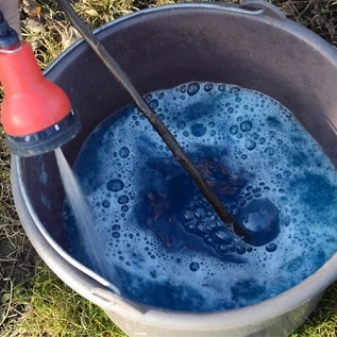
Pest detection and control
The leaf plates of cucumbers are very often covered with yellow spots due to the attacks of various dangerous pests. Most of them can be successfully dealt with if all the necessary actions are taken in time. A great danger to cucumber plantings is whitefly... This name belongs to a small butterfly that settles in the garden along with seedlings.If the plant has suffered precisely because of the whitefly, then the best solution would be to cut off and destroy all damaged leaf plates. It is advisable to do this immediately, without wasting time.
The spider mite loves to attack cucumber plantings. It often infects vegetables grown in open ground or greenhouses. The appearance of this pest can be noticed when the leaf is enveloped in a thin, barely perceptible cobweb. Despite the tiny size of the parasite, the spider mite can kill the plant. If yellow spots and holes appear on the cucumber leaves due to tick attacks, then you will need to promptly resort to processing using special means. It is necessary to process not only the attacked, but also all the nearby plants.
Very often, various folk remedies are used to get rid of a spider mite. A solution based on laundry soap is suitable.

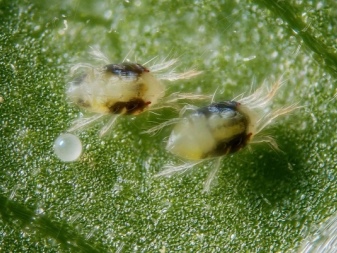
Often, problems with sheet plates arise due to attacks from the side aphids... This pest can cause serious damage to many horticultural crops. To save cucumbers from aphids, you can use the following effective remedies.
- You should know that aphids really do not like strong and pungent odors. Landings can be treated with tincture of tobacco or zest. To make a tobacco-based product, they take it out of the package with cigarettes, pour 5 liters of water, and then leave it to infuse for a day.
- An excellent solution would be an infusion made from orange peels. Lemon peels can be used instead of orange peels. They must be poured with 1 liter of boiling water, and then let stand for at least a day. After that, the composition is boiled for 10 minutes. Before spraying, the mixture is diluted in 10 liters of clean water.
Cucumber plantings can cause very serious harm sprout fly... Without insecticides, this parasite will definitely not be able to cope with. For effective spraying, summer residents very often use the following means:
- "Fufanon";
- Detox.
To pickle cucumber seeds, it is permissible to use:
- Iskra;
- Actellik.
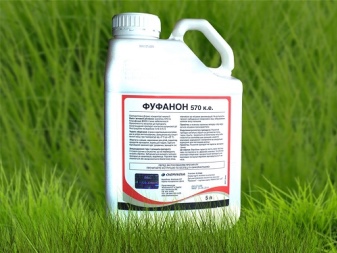
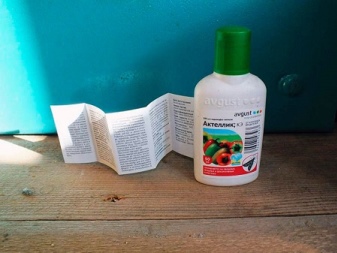
Prophylaxis
Cucumbers are susceptible to a large number of dangerous diseases. With a timely response, most of them can be successfully dealt with, but situations often arise in which rescue of landings is impossible. In order not to fight dangerous ailments, it is easier to initially prevent their occurrence. For this, it is important to follow certain preventive measures. If everything is done correctly, the plants will be protected from both diseases and parasite attacks.
Let's consider in detail what needs to be done in order not to treat cucumbers for various diseases.
- First of all, this vegetable crop requires an annual replacement of the zones for planting seedlings. This rule must be adhered to so as not to lose in the cucumber harvest.
- Regular and timely watering of cucumber plantings is required. It is very important to water this crop properly. Excess or lack of fluid must be avoided.
- It is advisable to resort to spraying using special meanspreventing the spread of pathogenic fungi and microorganisms.
- Without fail, the summer resident must be engaged in fertilizing and loosening the soil, in which there are cucumber plantings.
- It is recommended to use high quality covering materials. With their help, you can effectively protect cucumbers from the harmful effects of sudden temperature jumps.
- A summer resident who wants to grow full-fledged plants with healthy leaves in the beds, should always monitor the level of density of bushes. It is necessary to periodically deal with their thinning.
- Regular trimming of the bottom layer is also a necessary preventive measure. Fallen or damaged bushes should be removed in a timely manner.
- Immediately after planting cucumber bushes, in order to prevent it, it is advisable to mulch the surrounding soil. The same should be done in the aisles. Due to this, the necessary moisture will be retained, weeds will not appear. In such an environment, cucumbers are less susceptible to various diseases.
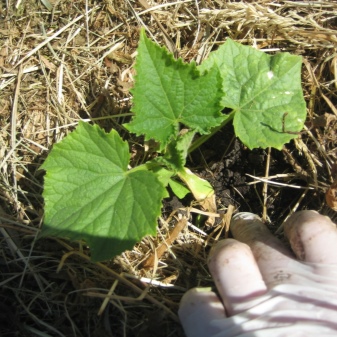
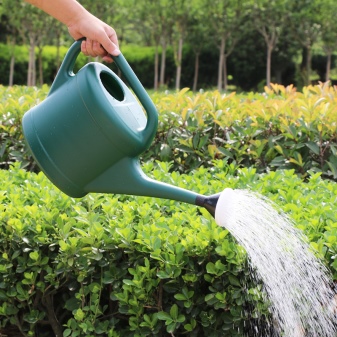
It is recommended to always keep under control the health status of cucumber plantings in the beds. The summer resident should regularly inspect the sheet plates for any damage.
Only if this condition is met, the gardener can notice in time that the leaves of the vegetable crop are covered with light, brown or yellow spots or holes. Actions taken in time will save the harvest.
The following video will tell you how to easily get rid of yellow spots on cucumbers.













The comment was sent successfully.